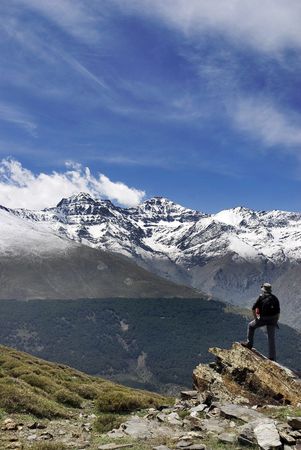Understanding UK Terrain: What to Expect
When preparing for a trek across the United Kingdom, it is crucial to appreciate the extraordinary diversity of its landscapes and how these variations directly influence the way you should adjust and use your trekking poles. From the craggy peaks and steep glens of the Scottish Highlands to the gentle but persistent undulations of the Welsh hills, each region presents unique challenges and opportunities for walkers. In England, the rolling countryside stretches out in patchwork fields, while expansive moorlands like those found in Dartmoor or the Yorkshire Dales offer vast open spaces with uneven footing and sometimes boggy conditions.
This rich variety means that no single approach to trekking pole usage will suffice everywhere; adaptability is key. For instance, rocky Highland paths demand a different pole length and grip than the softer, grassy slopes of southern England. Similarly, coastal trails along Cornwall’s cliffs or the Lake District’s fell walks require specific techniques to maximise stability and efficiency. Understanding these regional characteristics not only enhances your safety and comfort but also allows you to make the most of every step on your journey across Britain’s great outdoors.
2. Choosing the Right Trekking Poles for British Conditions
When venturing across the UK’s diverse landscapes—from the rugged Scottish Highlands to the rolling hills of the Lake District or the windswept coastlines of Cornwall—choosing trekking poles that suit local conditions is essential for safety, comfort, and performance. British weather is famously unpredictable; therefore, your choice must balance durability with adaptability. Below, we break down key features to consider:
Essential Features for UK Walking
| Feature | Recommendation for UK Use |
|---|---|
| Grip Type | Cork grips are ideal for wet weather as they provide excellent grip even when damp. Foam grips offer comfort in cold conditions but can absorb water. Rubber grips are durable and suitable for coastal walks. |
| Adjustability | Opt for poles with secure locking mechanisms (e.g., lever or twist locks) to adjust quickly on undulating terrain like fells or moorlands. Collapsible designs are useful when stowing away during train or bus journeys common in UK travel. |
| Materials | Aluminium poles are robust and withstand rocky paths such as those found in Snowdonia. Carbon fibre is lighter for long-distance routes but may be less resilient on stony ground. |
| Tip Design | Tungsten carbide tips offer excellent traction on slippery limestone or slate surfaces. Removable rubber tip protectors are advised for paved paths and conservation areas. |
Selecting by Terrain and Walking Style
If you frequently hike boggy paths or peat moors, consider wider baskets to prevent sinking. For technical scrambles, lightweight and highly adjustable poles allow greater flexibility. Ramblers who cover mixed surfaces should opt for versatile models with interchangeable tips and baskets.
Consider Local Weather Patterns
Given Britain’s frequent rain, quick-drying straps and corrosion-resistant materials are particularly advantageous. In exposed upland regions, sturdy locking systems help prevent accidental collapse during sudden gusts of wind—a not uncommon experience atop Ben Nevis or Pen y Fan.
By evaluating these features against your typical destinations and walking preferences, you’ll be well-equipped to choose trekking poles that enhance both your stability and enjoyment on Britain’s varied trails.
![]()
3. Adjusting Trekking Poles for Optimal Support
Proper adjustment of your trekking poles is essential to maximise comfort and stability as you traverse the UK’s diverse landscapes, from the rolling hills of the Cotswolds to the rugged peaks of Snowdonia. Follow this step-by-step guidance to ensure your poles are set up correctly for every gradient and surface you may encounter.
Step 1: Setting the Correct Pole Length
Start by standing upright with your elbows at a right angle (90 degrees) when holding the pole grips beside your body. This is generally an ideal length for level ground, such as woodland trails or open moorland. Most adjustable poles have clear markings—set both poles to the same length for balanced support. For ascents, especially on steep fells or rocky Lake District paths, shorten each pole by 5–10cm to enhance leverage and reduce arm fatigue. For descents, extend the poles by a similar amount to provide greater stability and minimise impact on your knees during long downhill stretches, such as those found in the Scottish Highlands.
Step 2: Adjusting Wrist Straps for Comfort and Control
Thread your hand up through each wrist strap from below, then grip the handle so the strap supports your wrist without causing pressure points. The correct fit allows you to transfer weight efficiently while maintaining a relaxed grip—especially important on longer routes like the Pennine Way or South West Coast Path. Straps should be snug but not restrictive, allowing freedom of movement and quick release if necessary.
Step 3: Adapting to Different Surfaces
The terrain across Britain varies considerably, so adjust your approach accordingly. On soft ground or muddy bridleways, ensure baskets are fitted to prevent sinking. On hard surfaces, such as paved towpaths or rocky outcrops, use rubber tips to improve grip and reduce wear on pole ends. Always check that pole segments are securely locked before setting off, particularly after making adjustments mid-walk.
Key Tips for Efficiency
Remember to periodically reassess pole length throughout your walk—UK weather and trail conditions can change rapidly. Quick adjustments can make all the difference in maintaining an efficient stride and reducing fatigue over varied terrain.
4. Proper Technique for Uphill, Downhill, and Flat Walking
Mastering the correct use of trekking poles is crucial for handling the UK’s diverse walking environments, from steep Lake District ascents to rolling Cornish coast paths. Adapting your pole technique not only enhances stability and safety but also conserves energy on long journeys.
Uphill Walking: Power and Balance
When tackling steep gradients—such as those found in Snowdonia or the Scottish Highlands—shorten your poles slightly. This adjustment helps maintain an upright posture and ensures each plant of the pole offers maximum propulsion. Place your poles slightly ahead and drive down through the wrist straps as you ascend, engaging your upper body to share the workload with your legs. Avoid reaching too far forward, which can upset balance and waste energy.
Downhill Walking: Control and Safety
Descending rugged fells or rocky Pennine bridleways requires a different approach. Lengthen your poles to provide additional support as you step downwards. Plant both poles just ahead of your feet, using them as stabilisers to reduce impact on knees and joints. Keep your body weight centred, resist leaning too far back, and use controlled steps—especially when traversing slippery or loose terrain common after British rain.
Flat Terrain: Rhythm and Endurance
For stretches such as the South Downs Way or Norfolk’s coastal paths, keep your poles at neutral length with elbows bent at roughly 90 degrees. Adopt a natural arm swing, placing the pole tip in line with or just behind your leading foot. This pattern supports a fluid stride and minimises fatigue over longer distances.
Technique Comparison Table
| Terrain | Pole Adjustment | Main Focus | Key Technique |
|---|---|---|---|
| Uphill | Slightly Shortened | Propulsion & Balance | Pole ahead, press through straps, upright posture |
| Downhill | Slightly Lengthened | Stability & Impact Reduction | Pole ahead of feet, control descent, avoid over-leaning back |
| Flat | Neutral (elbow at 90°) | Rhythm & Efficiency | Pole in line with foot, natural arm swing, steady pace |
Final Tips for All Terrains
Regardless of landscape, always secure your wrist straps correctly to avoid strain and ensure you can release them quickly in emergencies. Regularly check pole tips for wear—especially on stony trails—to maintain grip. With conscious technique adjustments, you’ll maximise safety, minimise fatigue, and truly enjoy Britain’s spectacular walking routes.
5. Caring for Your Poles in British Weather
One of the key challenges of trekking across the UK’s diverse landscapes is contending with the often unpredictable and frequently damp weather. Proper maintenance of your trekking poles not only extends their lifespan but also ensures reliable performance, regardless of whether you’re negotiating muddy Lake District trails, rocky Scottish highlands, or the rolling hills of the Cotswolds.
Cleaning After Each Use
It is essential to clean your poles thoroughly after every outing, especially when you’ve encountered mud, grit, or salt from coastal walks. Begin by dismantling telescopic poles if possible. Rinse each section with lukewarm water to remove dirt and debris—avoid using harsh chemicals as they can damage the pole’s finish and internal mechanisms. For stubborn mud or grit, use a soft brush. Dry all parts completely with a clean cloth before reassembling to prevent corrosion and sticking.
Paying Attention to Locks and Joints
The UK’s frequent rain can cause locks and joints to seize up or become less effective over time. Periodically inspect twist-locks and lever-locks for trapped grit or signs of rust. Apply a small amount of silicone-based lubricant to moving parts, but avoid oil-based products which may attract more dirt. Tighten any loose screws using an appropriate tool before each walk.
Dealing with Rocky Terrain
When traversing rocky ground such as Snowdonia or the Peak District, pole tips are exposed to significant wear. Regularly check carbide or rubber tips for damage and replace them when worn down to maintain grip and safety. Always carry spare tips in your kit for multi-day expeditions.
Storage Tips
The UK’s damp climate means moisture can easily linger inside collapsed poles. When back from your adventure, store your poles fully extended in a dry, well-ventilated place rather than keeping them in their travel bag. This allows any residual moisture to evaporate and helps prevent mildew or corrosion.
Summary
Consistent care tailored to the unique challenges of British weather will keep your trekking poles ready for action on any terrain. By cleaning, drying, inspecting, and storing your equipment properly, you’ll ensure optimal performance whether you’re conquering misty fells or muddy woodland paths.
6. Safety and Etiquette on UK Footpaths
When trekking across the United Kingdom’s diverse terrains, from Lake District fells to South West Coast Path cliffs, it is essential not only to use your trekking poles correctly but also to do so with respect for fellow walkers and the countryside itself. This means observing a set of time-honoured practices that reflect both British walking culture and the requirements of the Countryside Code.
Sharing Narrow Trails
The UK boasts thousands of miles of public footpaths, many of which are narrow or bounded by hedgerows and stone walls. On such trails, be mindful when wielding your trekking poles. Keep your poles close to your body and angled downwards when passing others, retracting them if necessary to avoid causing obstruction or inconvenience. If you encounter walkers coming uphill, tradition dictates giving way to them whenever practical. Always approach with a friendly greeting – a simple “Good morning” or “Afternoon” goes a long way in British walking circles.
Respecting Countryside Access Laws
Britain’s countryside is crisscrossed by rights of way, permissive paths, and open access land. It is crucial to know where you are allowed to walk and to stick to marked footpaths unless signage indicates otherwise. Avoid trespassing on private land and always close gates behind you, leaving them as you found them. If using trekking poles with carbide tips, consider rubber protectors to minimise damage to historic paths and sensitive terrain.
Considerate Pole Use in Line with the Countryside Code
The Countryside Code underpins responsible enjoyment of the outdoors in England and Wales (with similar guidance in Scotland). Key points include: leave no trace; take litter home; protect plants and wildlife; keep dogs under control; and be considerate of local communities. When using trekking poles, ensure that your actions do not disturb wildlife or livestock—avoid clattering poles on stone walls or metal gates. In busy areas or beauty spots, stow your poles when pausing for rest or taking photos so as not to block paths or trip others inadvertently.
By following these guidelines, you’ll contribute positively to the communal spirit of British walking culture while safeguarding access for future generations. Trekking respectfully ensures that everyone can enjoy the UK’s magnificent landscapes safely and harmoniously.


